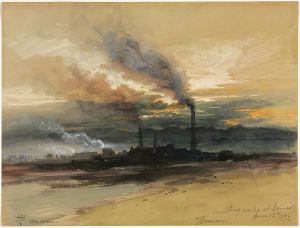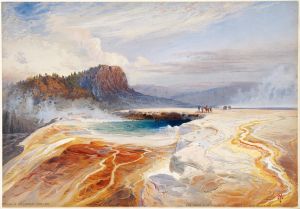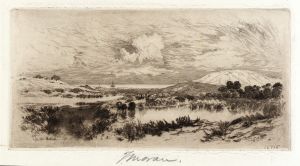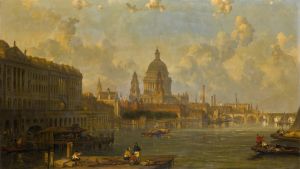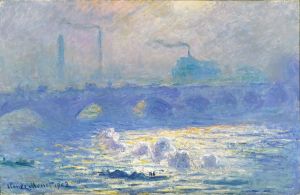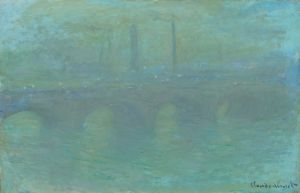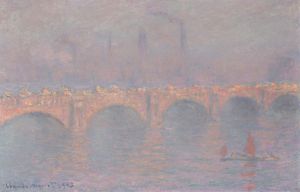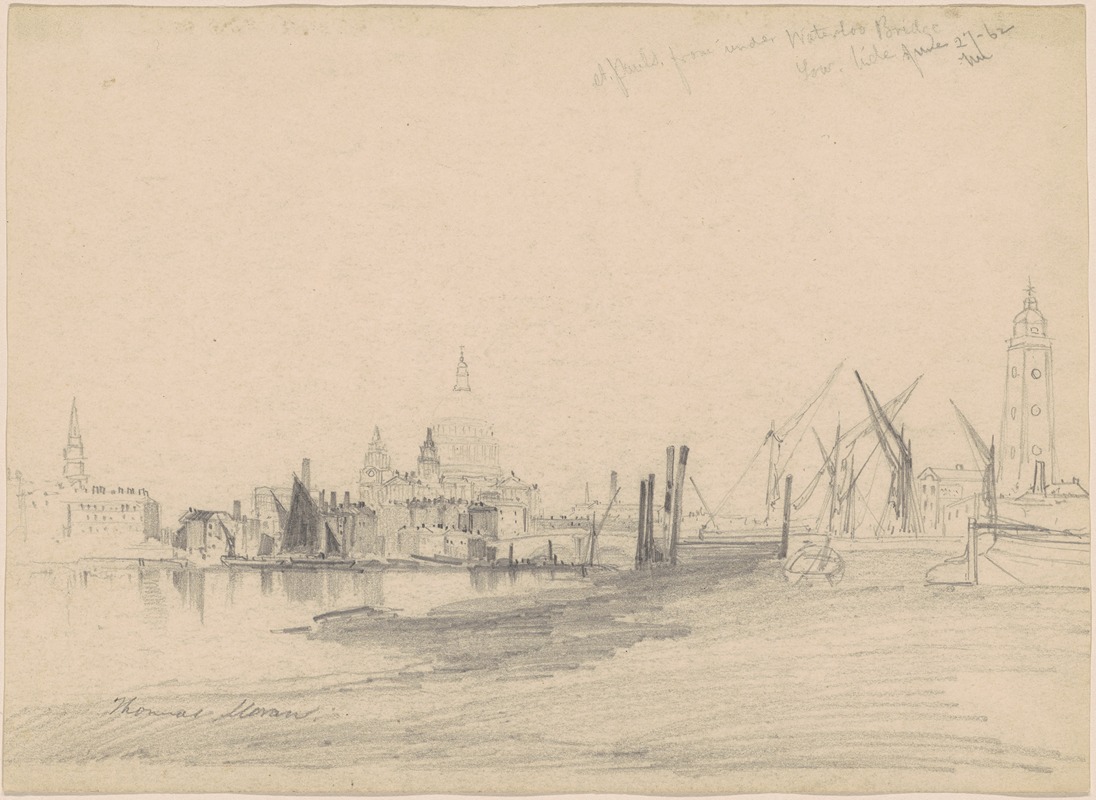
St. Paul’s from Under Waterloo Bridge, Low Tide
A hand-painted replica of Thomas Moran’s masterpiece St. Paul’s from Under Waterloo Bridge, Low Tide, meticulously crafted by professional artists to capture the true essence of the original. Each piece is created with museum-quality canvas and rare mineral pigments, carefully painted by experienced artists with delicate brushstrokes and rich, layered colors to perfectly recreate the texture of the original artwork. Unlike machine-printed reproductions, this hand-painted version brings the painting to life, infused with the artist’s emotions and skill in every stroke. Whether for personal collection or home decoration, it instantly elevates the artistic atmosphere of any space.
Thomas Moran's painting St. Paul’s from Under Waterloo Bridge, Low Tide is a work that reflects the artist's interest in capturing atmospheric effects and urban landscapes. Thomas Moran (1837–1926) was an American painter and printmaker of the Hudson River School, known for his depictions of the American West. However, he also created works inspired by European landscapes and cityscapes during his travels abroad.
This particular painting portrays a view of St. Paul’s Cathedral in London, as seen from beneath Waterloo Bridge at low tide. The composition highlights the interplay of light, water, and architectural elements, showcasing Moran’s ability to depict both natural and man-made environments. The Thames River, with its exposed riverbed during low tide, serves as a foreground element, drawing the viewer’s eye toward the iconic dome of St. Paul’s Cathedral in the distance. The bridge itself frames the scene, creating a sense of depth and structure.
Moran’s visit to London and other parts of Europe in the late 19th century influenced his artistic style, as he was exposed to the works of European masters and the urban landscapes of major cities. His European paintings often demonstrate a blend of his American sensibilities with the techniques and subjects he encountered abroad. In this painting, Moran captures the atmospheric qualities of London, including the soft light and the hazy, almost ethereal quality of the city’s skyline.
The painting is notable for its detailed rendering of architectural elements and its use of light to create a sense of mood and time of day. Moran’s skillful handling of color and texture conveys the reflective surface of the water and the weathered appearance of the bridge. The inclusion of figures and boats in the scene adds a sense of scale and activity, emphasizing the bustling nature of the Thames as a vital part of London’s life.
St. Paul’s from Under Waterloo Bridge, Low Tide is an example of Moran’s versatility as an artist, demonstrating his ability to move beyond the dramatic landscapes of the American West to explore urban and European subjects. The painting is part of a broader body of work that showcases Moran’s interest in light, atmosphere, and the relationship between nature and human activity.
Further details about the painting’s creation date, current location, or provenance are not readily available.





